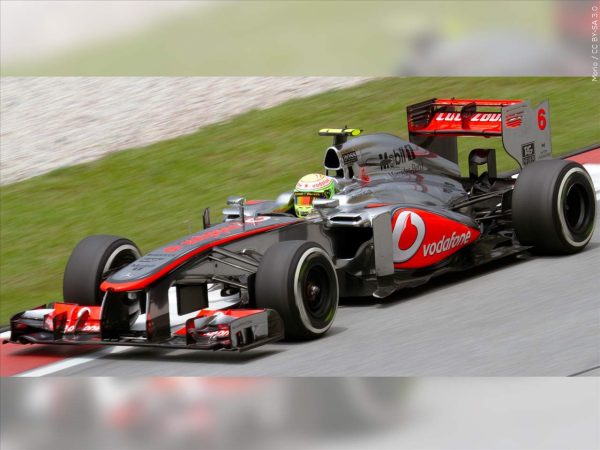
The symphony of roaring V8 engines has captivated American audiences for decades. NASCAR has dominated the American racing scene since its inception in the late 1940s, as the sight of bumper-to-bumper action on oval tracks has defined American motorsports. NASCAR has its roots deep within Southern culture and its all-American driver base; however, in recent years, a new force has begun to gain serious traction from across the pond: Formula 1.
Once considered a niche take on motorsports in the United States, F1 has experienced a sharp rise in popularity in recent years. This growth has been fueled by a mix of marketing, globalism and breakout representations of the sport in American media.
Ford vs Ferrari, Drive to Survive and many other beloved movies and TV shows have increased American awareness towards European racing. Now, with three Grand Prix events on American soil — Miami, Austin and Las Vegas — F1 is no longer just a European novelty. It’s becoming a fixture in U.S. sports culture.
“I started paying attention to Formula 1 because it felt like the modern version of NASCAR,” said Cooper Treaday, a junior business administration major. “The fact that car brands compete and push the limits of design is really cool for me. The movie [Ford v Ferrari] definitely sparked my interest in F1 because it showed that racing isn’t just about speed — it’s about innovation.”
The Miami Grand Prix, in particular, has become a spectacle. Held around the Hard Rock Stadium, the event blends speed with notoriety, drawing A-list attendees and hosting extravagant VIP events. What truly sets the Miami GP apart is the electric atmosphere. Unlike traditional motorsport venues, Miami transforms its race weekend into a full-blown festival. The main attraction is in the incorporation of celebrities, athletes, musicians and influencers in the everyday events of the weekend.
The track itself is a 3.36-mile street-style circuit with 19 turns and long straights that encourage overtaking, something that often lacks on tighter F1 courses. It offers a mix of technical challenge and speed, with races frequently defined by how players use the two in tandem.
From an economic standpoint, the Miami Grand Prix is also a major win for the city. In its debut year alone, it generated an estimated $350 million for the local economy and attracted more than 240,000 attendees over the race weekend. Local businesses, hotels and restaurants thrive during the event, each having special deals and later hours to accommodate the influx of F1 tourists.
For F1 as a brand, Miami represents a perfect storm of American appeal — sunshine, celebrity, speed and spectacle. It contrasts with more established circuits where tradition and history dominate. Instead of this, Miami is flashy, fun, and forward-looking, presenting a race designed to engage newer audiences and show what the future of the sport might look like in America.
What sets F1 and NASCAR apart is not the location or the ambiance, but the experience. NASCAR typically features a longer event on an oval track, with heavier close-contact racing, pit strategy, and endurance. The cars are all stock-based with little to no modifications and are relatively similar in design.
By contrast, F1 presents a global engineering arms race, with 20 drivers, 10 teams and 20 uniquely designed cars all created by the world’s most renowned automotive dealers. Each car is built for speed, not endurance, with designers pushing the limits on aerodynamics and innovation.
“I’ve always been a huge NASCAR fan,” said Sean Harrison a freshman history major. “I grew up watching it with my family, and there’s just something about the tradition and the close racing that feels like home to me. Lately, I’ve started getting into Formula 1 too. It’s very different, like the strategy with the pit stops, the different types of tracks around the world, and the whole atmosphere.”
Culturally, NASCAR commands a deeply loyal audience, especially within the American South and Midwest. Its appeal is through accessibility, as it remains cheap for casual fans and families to partake in its grassroots charm. On the other hand, F1 markets itself as an elite global racing experience, with the barrier for entry being much higher, both in terms of ticket cost and understanding the sport’s intricacies.
The rise of F1 has brought renewed attention to motorsports in general. Some NASCAR fans are becoming dual enthusiasts, appreciating the tactical finesse of F1 alongside the gritty drama of stock car racing.

